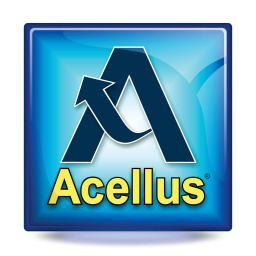Introduction to Java

Course Features
Course Details
Course Overview
In the Acellus Introduction to Java course, students are taught basic programming using the Java coding language. They use the jGrasp editor/compiler along with the Java JDK to design and code, and to learn about variables, operations, data types, input and output, libraries, selection statements, arrays, functions, and methods.
The Introduction to Java course is taught by Ms. Lori Hunt.
Sample Lesson - Methods in Java
 This course was developed by the International Academy of Science.
Learn More
This course was developed by the International Academy of Science.
Learn More
Scope and Sequence
Unit 1 Students prepare for learning to program by discussing what programming is and why we program. They investigate basic concepts of programming, including algorithms, commands, and abstractions, and learn to explore an integrated development environment (IDE). They further discuss programming languages and compilers, and are introduced to jGrasp, the IDE they will use for this class. Unit 2 In this unit students lay the foundation of their understanding of the Java programming language by studying the basic structure of a Java program and an overview of input and output, including an introduction to basic terminal output. Variables, Java data types, and string data types help fill in this foundation, along with a discussion of Java Libraries, including how to use the Scanner library for input, and how to use the JOptionPane library for both input and output. Unit 3 Understanding how a computer thinks, as presented in this unit, empowers students to be better programmers. Students also explore additional essential aspects of programming in Java: data types, the ASCII chart, and binary-decimal and decimal-binary conversion. Unit 4 Continuing their study of data types, students explore Int and Double data types, basic arithmetic operators, order of operations, and type-casting with Int and Double. They investigate operator shortcuts, reading in numeric data Scanner, reading in numeric data JOptionPane, and writing a program with arithmetic input. They explore Try - Catch statements including using Try - Catch with Scanner and with JOptionPane, and learn to put it all together to write long division. Unit 5 Students focus on string format, including string format with numbers and with date. They learn to work with dates and formatting and to write a program with formatting. Following this unit students are presented with the Mid-Term Review and Exam. Unit 6 The Java Library Math Class provides programmers with the ability to easily do any math that is needed in their programs. Students explore the Math Class library and learn how to use it to create a program that applies the quadratic formula to solve quadratic equations. They also investigate the Random Class. Unit 7 The logic of programming begins with selection statements. Students learn to use if statements and boolean data types, to compare string values, and to use if-else and nested if-else statements. They also investigate logic operators, using switch/case statements to make decisions, and planning and programming an AI program. Finally, they consider the social responsibilities of programming. Unit 8 Students learn to use looping to facilitate the execution of a set of instructions/functions repeatedly while some condition evaluates to true. They learn for loops, while loops, for loops with multiple statements, and nested for loops, as well as how to use break statements to "break out" of a loop. Unit 9 Using the String Class Method, students learn to perform operations on strings such as trimming, concatenating, converting, comparing, replacing strings etc. They also learn to do algorithms with strings. Unit 10 In this unit students discover that they can use an array - a data structure - to store a fixed-size collection of elements of the same data type. They learn to set up basic arrays, and to populate, print and traverse arrays. They explore parallel arrays as well as optional button input with dialog boxes, and optional drop down menus with dialog boxes. Unit 11 Investigating fairly advanced subjects, students review methods, including the general outline of a method. They discuss how functions work in math (and programming), writing and calling on a method, writing methods that use parameters, that have a return, that both use parameters and have a return, and that have an array as a parameter. They also investigate the scope of variables, and reference versus value in passing parameters. Following this unit students are presented with the Final Review and Exam.
This course does not have any sections.


